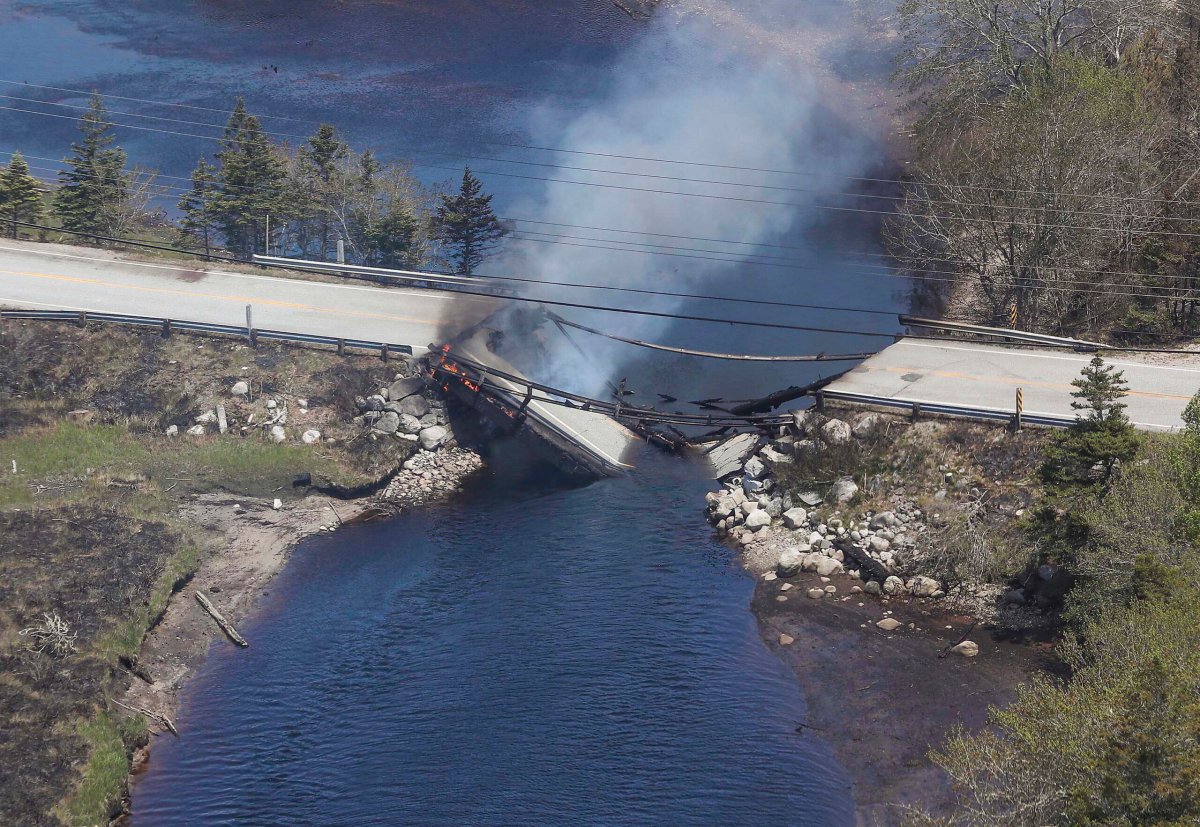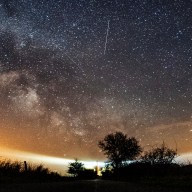HALIFAX, Nova Scotia (AP) — Residents from Canada’s Atlantic Coast city of Halifax whose homes have been destroyed by wildfires boarded buses Friday to get a look at what little remains of where they used to live.
About 200 structures, including 151 homes, have been destroyed in the Halifax area, though those numbers could change. In all, more than 16,000 people were evacuated from homes and businesses there.
Katherine Tarateski, a local real estate agent who lost her home during the fire, said she had already seen images of her house in ruins. But she said she wanted to help a neighbor who would be seeing the remains of her home for the first time.
“I’m going to support my friend because she was living alone, and she doesn’t want to be alone when she sees what’s left there,” Tarateski said. “It’s very emotional.”
Bill Moore, the region’s executive director of community safety, told a news conference that about 200 people would be part of the grim tour through subdivisions northwest of the downtown, which fire officials said would be safe to enter for a short time
Local resident Jody Stuart, who also lost his home to the fire, said he didn’t want to be a part of the tour.
“I need to physically go and do my thing with family and friends beside me,” said Stuart, whose nine-year-old daughter was sitting behind him in his pickup truck, cuddling a stuffed dog.
“I’ve done a lot of hugging and crying,” Stuart said. ”(But) I don’t plan on leaving my community, as I love my community.”
The contractor said his home in the Yankeetown subdivision contained all of his tools, which are now gone. “There are just two houses still standing (on my street),” he said. “It’s unbelievable.”
Nova Scotia Premier Tim Houston said there was plenty of work to be done but made it clear he was feeling a bit relieved on Friday.
“Through all of this despair, zero deaths, zero missing persons, zero serious injuries,” he said
The wildfire that started Sunday in Upper Tantallon, Nova Scotia, was still considered out of control Friday, but 50% of it was contained by firefighters as of Thursday.
In Halifax, deputy fire Chief Roy Hollett said Friday that some of the damaged and destroyed homes were still burning, and he stressed that some of the affected neighborhoods are still part of an active fire scene. That’s why those travelling through the area as part of the bus tour were not allowed to leave the vehicles.
“I was out there last night,” Hollett said. “The smoke was very thick. You could taste it.”
Meanwhile, the forecast was calling for steady rain Friday night and into Saturday.
“We’re getting rain, and lots of it,” Bob Robichaud, a senior meteorologist with Environment Canada, told an afternoon briefing. He said the heaviest rain, which will extend into next week, will fall on the western side of the province, where it is needed the most.
In the southwestern corner of the province, a much larger wildfire continued to burn out of control in Shelburne County, where 6,700 people have been evacuated from their homes — about half of the municipality’s population.
The Barrington Lake wildfire, which started Saturday, continued to grow on Thursday, reaching 200 square kilometers (more than 75 square miles) — the largest recorded wildfire in the province’s history. It has consumed 50 homes and cottages.
No rain was reported Friday morning in Shelburne County, where there was concern about thunderstorms producing lightning strikes in the afternoon. Steeves said lightning would ground all aircraft and make it unsafe for crews on the ground.
A city on Quebec’s north shore also declared a state of emergency on Friday as forest fires raged in different parts of that province. Sept-Îles Mayor Steeve Beaupré said certain sectors of his city about 890 kilometers (590 miles) northeast of Montreal were ordered to evacuate by 4 p.m. Friday as a preventative measure. The Uashat Mak Mani-utenam First Nation said the roughly 1,500 residents of the Innu community of Mani-Utenam outside Sept-Îles have also been told to leave their homes.
Public Security Minister François Bonnardel said about 10,000 people are affected by the evacuation order on Quebec’s north shore and 1,000 in the municipality of Chapais.
U.S. officials as far south as Maryland, Baltimore, Virginia and Pennsylvania reported being impacted by the Canadian wildfires.
The National Weather Service in Wakefield, Virginia, issued an air quality alert for Friday for the Richmond, Virginia area due to smoke from wildfires across the northeast and Atlantic Canada.
St. Mary’s County Department of Emergency Services, located about 80 miles (about 130 kilometers) south of Washington D.C., warned residents in a tweet on Thursday that air quality might be impacted by the fires in southeastern Canada.
Similar warnings were issued by the National Weather Service in Baltimore-Washington and the Philadelphia area, including parts of New Jersey, where officials warned sensitive groups to take precautions when going outside. A thick smoke plume was reported over Cape Cod, Massachusetts.



















